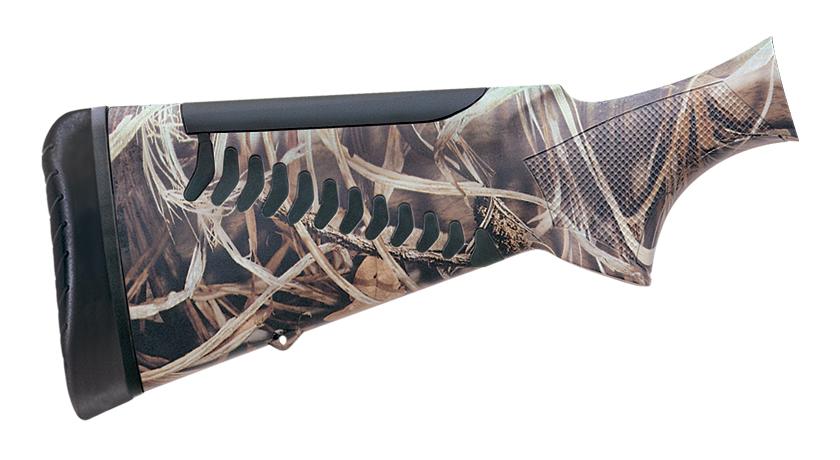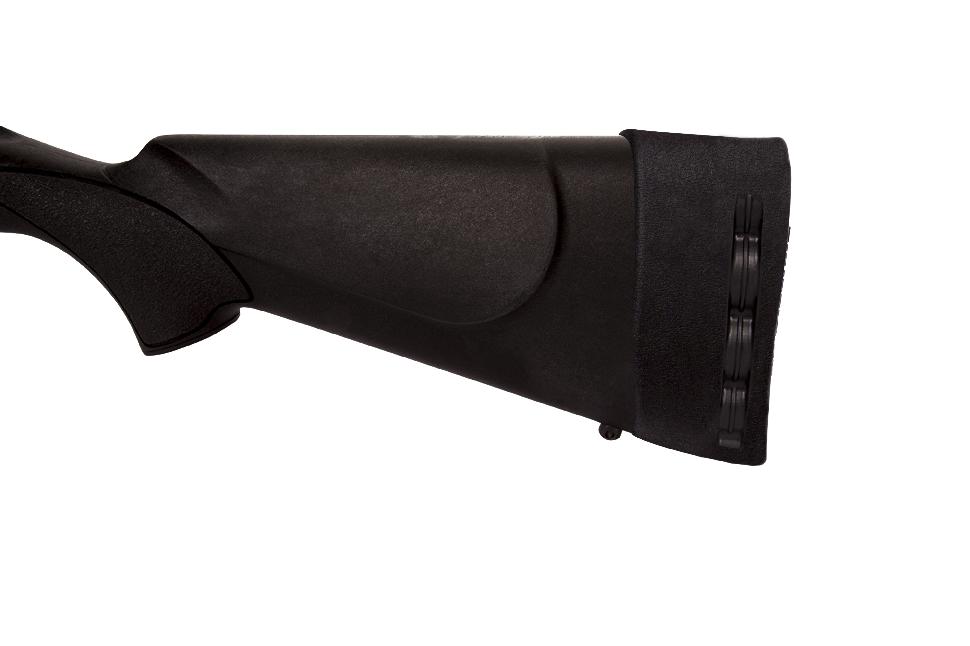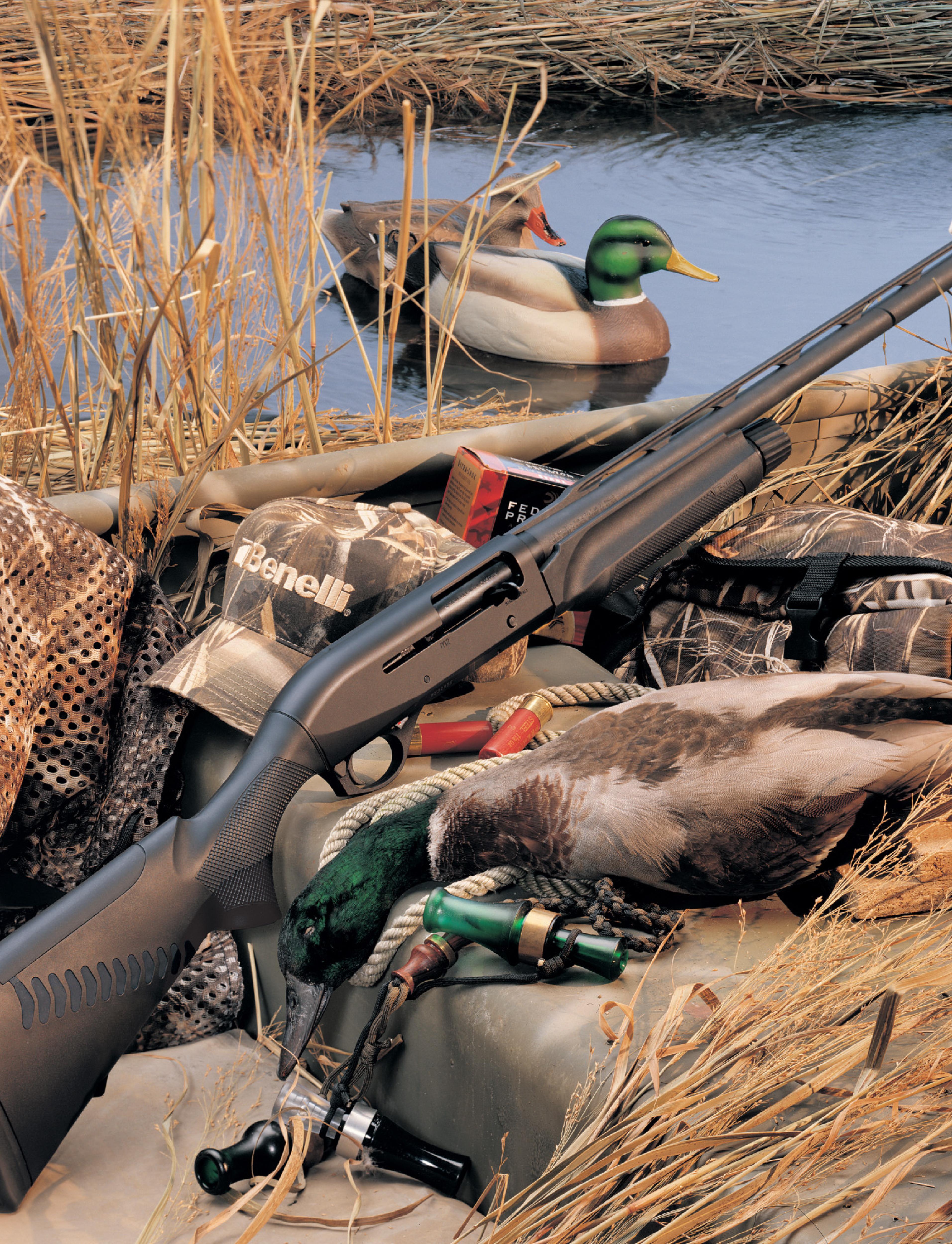Over the years I have come to the conclusion that for many of us recoil is very much akin to that skeleton we may have locked away in a closet that no one thinks about until it unexpectedly jumps out and scares the heck out of us. I believe that this is even more prevalent today than it was in the past, particularly with the advent of the many new super magnum cartridges and ammunition that abound these days. There are rifle cartridges out there that could all but stop a tank and, when it comes to shotshells that can push over two ounces of shot down a barrel at speeds that would have busted prehistoric high flying reptiles, recoil is certainly an issue that requires attention, whether we care to admit it or not. But prior to heading too far down this investigative trail, I will regress very briefly to my youth when I recall a single shot 12 gauge shotgun, which was so light and poorly designed that when I decided to try a few magnum loads on a goose hunt, it all but loosened my jaw bone. And so this brings me to the question of what exactly is recoil, or more importantly, felt recoil, which has and will continue to be a potential problem for all of us hunters and shooters.
Advertisement

I have read long and windy explanations of what recoil is and how to measure it. Many were filled with minutia that left me no further educated than when I started. Even more profound is that methods of attempting to measure recoil in some standard way have been ongoing for over a century. One would think that with all the great minds out there, and especially with the advent of modern technology, it would not have been so. I suspect much of it has to do with the many variables involved, so I’m going to try and cut right to the chase. If you take it in its simplest terms, it is the rearward push when a gun is fired. For all intents and purposes, it involves three critical elements; the weight of the projectile, the amount of powder being burned, and the weight of the gun. In other words, the heavier the bullet or shot, the more powder you burn, and the lighter the gun, the more recoil there is going to be. It also occurs in less than a blink of an eye, in fact, in as little as 1/100 of a second. However, in that mere fraction of a second, the amount of recoil energy can vary greatly. As an example, a one ounce, 12 gauge target load at 1180 feet per second (fps) in a typical 7.5 lb. gun is reported to have 17.3 foot pounds (ft. lbs.) of recoil, about the same as a .270 rifle. But up that to a three-inch, 1 7/8 ounce magnum load in that same weight of gun and the shooter is being belted with over 60 ft. lbs. of energy. This is equivalent to the recoil force of a .378 Weatherby Magnum rifle. In other words, we are not talking about a lack of significant force here but rather one that can influence how we shoot or how consistently we shoot. And to add to that, not everyone reacts to recoil in the same way.
A good example of how recoil can affect us as hunters takes me back a few years to when I invited a buddy on his first Saskatchewan goose hunt. Unfortunately, the only shotgun he owned at the time was a lightweight 12 gauge over/under, a shotgun that, despite being chambered for three-inch shot shells, was no doubt designed primarily for the upland bird hunter. At the end of the second morning, his entire right shoulder had turned black and blue from the pounding he was taking from those magnum 1 7/8 oz., 3-inch goose loads. What was even worse, he was becoming so sensitive to this heavy recoil that his shooting success became nonexistent. Conversely, I have a friend who is a terrific wing shot but has a horrible time with a rifle. Every time he would attempt to hold on a target or game, you could visually see him tighten up prior to pulling the trigger. Most often he missed or, on occasion, he would even wound an animal. The simple difference is that wing shooting is instinctive, whereas with a rifle he had to face focusing on the shot when he knew he was going to get belted by the recoil from his rifle. Without a doubt, recoil is a factor we need to reckon with, as unfortunately, if we don’t heed its potential influence, it can cause serious problems such as flinching. I for one don’t like getting beat up, particularly on the range. This despite being a big guy and not being particularly sensitive to recoil as I have fired a lot of big bores, including a fair few of those British Doubles where it would appear you could rattle a quarter down the barrel. In fact, the more shooting I do, the more particular I get about ensuring that this does not happen.
Advertisement
So what does this mean? In short, it means that a lot of factors go into what is felt recoil and what can be done about it.
Gun Fit and Shooting Technique
I believe the best place to start is with the basics of gun fit and shooting techniques that can reduce or even correct felt recoil. I can’t over-emphasize the importance of ensuring that your rifle or shotgun fits you properly. That includes all the requisite measurement such as length of pull, drop at comb and so on. It should come smoothly to your shoulder so that the butt can be properly positioned on your shoulder, and when your cheek is planted on the stock, it must also provide you with the correct sight picture. You should not have to move either forward or backward to obtain a good sight picture. Too much forward creep on a rifle stock and the scope can leave you with a nasty cut over your eye, which is something to be avoided I can assure you. This brings me to proper butt placement; make sure it is positioned properly against your shoulder in the hollow between your shoulder and your collarbone and not against the upper arm. Grip the gun in a manner that, while relaxed, will still offer you control as the gun is being fired. Always remember that tight muscles generally do not react well to recoil nor do they perform as well. Follow through on your shot whether you are shooting at a fast fleeing rooster or during your hold on a big buck. It will aid in lessening the felt recoil.
Advertisement

Gun Design
Gun design can also significantly alter the recoil of a gun. Many companies have put a lot of design work into developing features that will reduce felt recoil, and yet others are an integral component of the action design itself. For example autoloaders, be it a rifle or shotgun, will reduce recoil as some of its recoil is dampened or utilized in the recycling portion of the firing process. Then there are autoloaders such as the Berretta A400 Xtreme, which incorporate a whole series of additional design features to reduce recoil. Its Kick-Off reduction system with hydraulic dampers collectively reduces recoil by up to 70 percent, bettering other shotguns by 60 percent. And it works. On a trip to Argentina where, in four days of wing shooting, I put 2800 rounds through this gun’s predecessor, the only thing that hurt were my fingers from the constant reloading. A couple of other innovative autoloader shotgun designs that warrant mention are Remington’s Versa Port system that is said to reduce the recoil of a 12 gauge to that of a 20 gauge and Browning’s Power Drive Gas System that when combined with its recoil pad and back-boring, gives you 18 percent less felt recoil. And I cannot leave the subject of autoloaders without including a rifle, of which the Benelli R1 is a good example. With its A.R.G.O. (Auto-Regulating Gas-Operated) system and other related recoil reduction features, it is said to reduce the felt recoil of a .300 Winchester Magnum to that of a .270 Winchester. Its recovery time for a follow up shot is also said to be 51 percent faster than a bolt-action rifle of the same caliber. What a plus on a fast fleeing whitetail buck. Additionally, the heavier the gun, the less it is going to impart felt recoil and conversely, the lighter it is the more impact you will feel. A lightweight magnum rifle or lightweight shotgun with heavy magnum loads is just going to recoil that much harder than their heavier counterparts, as any of us who have fired either can attest.
Next, consider specific features that reduce felt recoil. Despite the numerous variations that I could discuss, I will stick to those that I find to be the most useful. One of the simplest is to either buy a gun with a proper recoil pad or have one such as my favorite, the Decelerator, installed. Just make sure that when your smithy installs the pad, the overall length is not altered unless, of course, you need to have it altered. I have removed just about every factory pad on every rifle I own and replaced them with Decelerator pads. LimbSaver also offers a number of high quality pads including the new AirTech Recoil Pad and a number of Slip-On Recoil Pads.
Muzzle Breaks/Porting
Next are muzzle breaks and porting. For rifles, I have found the KDF muzzle brake or similarly designed models to be the most effective and have installed them on all of my big bore rifles and on a couple of medium bores as well. Some companies actually include muzzle breaks on a number of their rifles, particularly if they are of the big bore variety. The reduction in recoil is remarkable but just as importantly, they significantly reduce muzzle jump. On many an occasion, I have been able to hold so steady on my target after the shot that I have been able to see the exact location of the impact on game. What a great asset when hunting, as you can see exactly how the animal reacts to the hit. And, if necessary, it additionally offers a much quicker follow-up shot. There is, of course, a downside and that is muzzle blast; they are loud so you want to ensure that you and anyone around you is wearing adequate ear protection when shooting a rifle with a muzzle brake. I even double up on protection by wearing earplugs as well as earmuffs.
For shotguns, there are a number of potential answers; the first of these is porting. Some manufacturers actually port certain models, particularly competition models, where shooters often put many thousands of rounds down their barrels each year and where reduced muzzle jump for follow up shots on doubles can offer an advantage. Some competition models even have elaborate recoil reduction devices designed right into the butt stock such as the Browning BT99 Golden Clay that, in addition to porting, has an Adjustable GraCoil recoil reduction system. Another would be the Remington 1100 Competition with its recoil reducing system and SuperCell recoil pad.
You may even want to consider a relatively new product from Kick’s, a diagonally ported choke tube that actually is very similar in appearance to a KDF style muzzle break. Once again, it substantially reduces recoil and muzzle jump, as well it is said to improve patterns by as much as 20 percent. Benelli also offers an Extended Ported Choke, what a great idea for multiple fast moving targets where recoil is an issue, or, for that matter, where you just simply want to reduce recoil or muzzle jump on guns such as a pump gun where no other recoil reduction features exist.
On the Range, Ammunition and Calibre Selection
One of the easiest places to develop a flinch is on the range, so go prepared, particularly if you are going to do a lot of shooting or are shooting big bores. I often use a slip-on shoulder recoil reduction pad, and I ensure that I‘m set up with the rifle or gun properly in place on a gun rest and against my shoulder. Now I even go one step further for all of the medium and big bore shooting that I do, and that is to use a recoil reduction-type rest such as Caldwell’s Lead Sled Shooting Rest or the new Champion Premium Shooting Rest. It is simply amazing how they have not only kept me on the range all day but also aided in shooting tighter groups. And that goes for shotguns as well, be it a slug gun or a standard scatter gun that I happen to be patterning. A very good idea!
If at any time you think that you may be flinching, have a buddy at the range, under safe conditions, load your rifle for you so that you won’t know if it contains a cartridge or not. Then proceed to fire it as if it contains a live round. It won‘t take but a few dry fires to see if you have a flinch problem.
The final approach involves two essential elements. The first is, if you are recoil sensitive, shoot a smaller calibre and leave those mega magnums to other folk. A .270 Winchester or a 30-06 Springfield will kill a deer just as effectively as a .300 Ultra Magnum. Or you can consider light or reduced load cartridges that are now being made available by various cartridge companies. Or get into hand loading and load your own reduced cartridges. When I was into a lot of trap shooting, I found that I could more readily sustain a long day on the trap range when using reduced or light loads and they broke just as many targets. And when it came to my rifles and a fun day on the range, or when I was doing a lot of centerfire silhouette shooting, I could plink away a lot of reduced powder charged hand loads without the recoil leaving me with jumpy shoulder muscles from the constant pounding they would have taken with maximum loads.
In the end, what we have to remind ourselves of is that guns do kick, some a lot more than others. We should never be remiss in recognizing this fact and so make whatever personal or equipment adjustments necessary to avoid the flinching blues.
